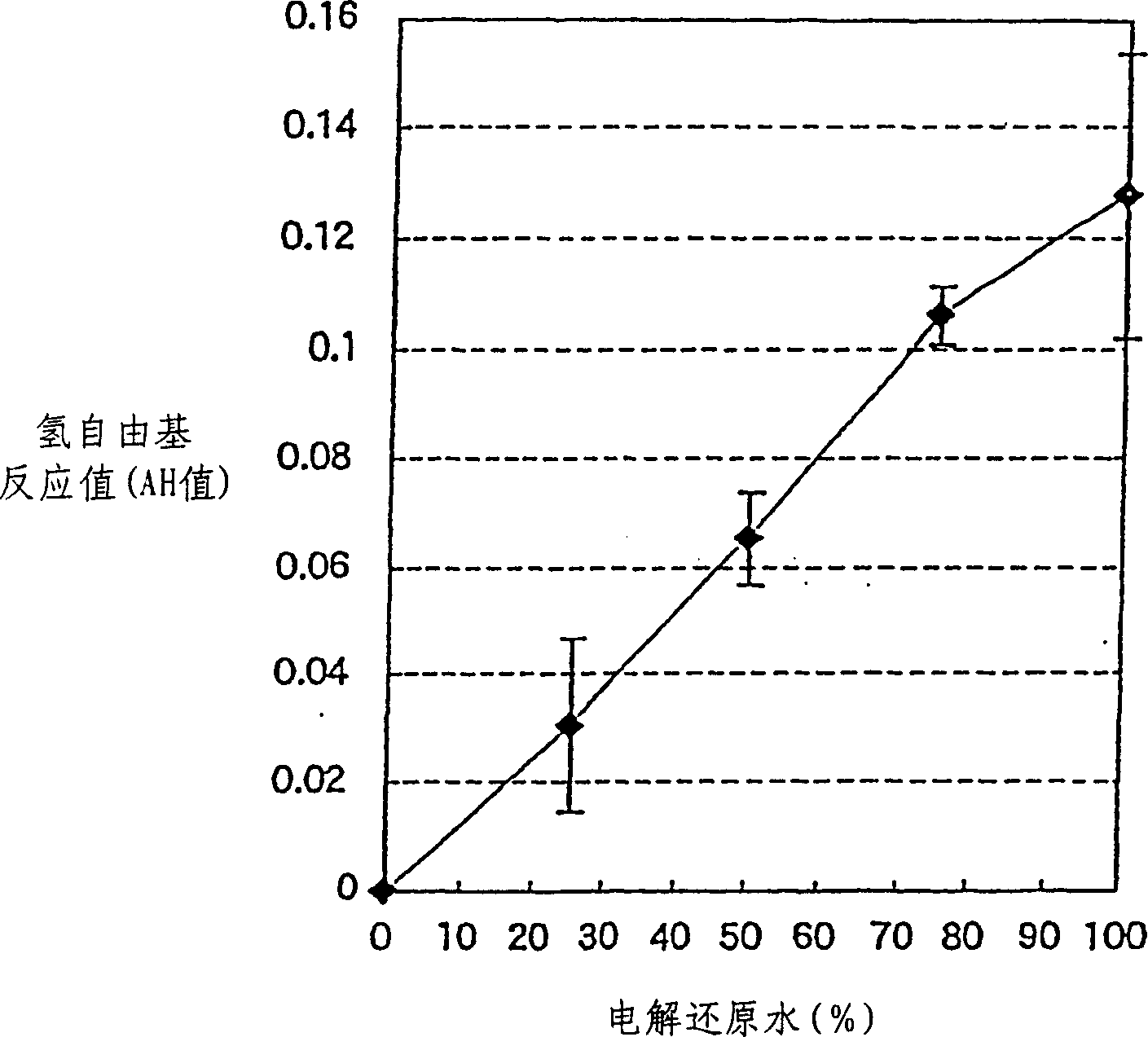Detection method and quantitative analysis method for hydrogen radical
A detection method and free radical technology, which is applied in chemical method analysis, analytical materials, measuring devices, etc., can solve the problems of difficult detection sensitivity, low concentration of hydrogen free radicals, low detection, etc.
- Summary
- Abstract
- Description
- Claims
- Application Information
AI Technical Summary
Problems solved by technology
Method used
Image
Examples
Embodiment 1
[0044] Embodiment 1: detect the hydrogen free radical produced by platinum black-hydrogen with DBNBS
[0045] 1-1 Reagent
[0046] DBNBS is manufactured by Labo Tech Co., Ltd., platinum black is manufactured by Shifu Metal Mining Co., Ltd., and hydrogen is manufactured by Dayang Sanso Co., Ltd. Dissolve DBNBS in ultrapure water (Milli Q water) at a concentration of 2.5 mg / ml, store at 4°C, and use up within 2 weeks.
[0047] 1-2 Generation of hydrogen radicals from platinum black-hydrogen
[0048] The hydrogen gas becomes atomic hydrogen on the platinum surface. Then, hydrogen gas was bubbled at 45 ml / min into 20 ml of a 2.5 mg / ml DBNBS solution containing 0.01 mg / ml platinum black. After 5 minutes, 10 minutes, 15 minutes, 30 minutes, 45 minutes, and 60 minutes, 200 microliters were recovered, and after centrifugation at 12,000 rpm for 5 minutes, the supernatant was incubated in a constant temperature bath at 60°C for 1 hour. Use the material without blowing hydrogen gas a...
Embodiment 2
[0053] Example 2: Detection of hydrogen free radicals in electrolytically reduced water with DBNBS
[0054] 2-1 Reagents
[0055] The same substance as in Example 1 was used.
[0056] 2-2 Electrolyzed reduced water
[0057] Using the electrolytic reduction water device TI-8000 manufactured by Japan Trim Company, 0.01% NaCl water was electrolytically reduced at 4 levels (5A), and electrolytic reduced water was obtained on the cathode side.
[0058] 2-3 Detection of Hydrogen Free Radicals
[0059] Add 200 microliters of DBNBS preservation solution to 125 milliliters of electrolyzed reduced water, stir, and concentrate and dry in a constant temperature bath at 60° C. with a rotary evaporator. The concentrated dry matter was dissolved in 1 ml of ultrapure water (Milli Q water) and recovered. Then, it was incubated in a constant temperature bath at 60° C. for 1 hour, allowed to stand on ice for 5 minutes, and centrifuged at 12,000 rpm to obtain a supernatant. The same DBNBS sa...
Embodiment 3
[0061] Example 3: The relationship between the concentration of electrolyzed reduced water and the reaction value of hydrogen radicals, and the relationship between the strength of electrolysis and the reaction value of hydrogen radicals
[0062] It was tested whether there is a correlation between the concentration of electrolyzed reduced water and the amount of hydrogen radicals. The electrolytic reduced water was diluted with ultrapure water (Milli Q water) to measure the hydrogen radical reaction value of each sample. In order to investigate the relationship between electrolytic strength and hydrogen radical reaction value, water with NaCl concentration ranging from 0.0001% to 0.01% was prepared, and the active hydrogen reaction of water after electrolytic reduction was measured for each sample. The electrolytic reduced water is the reduced water obtained on the cathode side by 4-stage (5A) electrolytic reduction using the electrolytic reduced water device TI-8000 manufact...
PUM
 Login to View More
Login to View More Abstract
Description
Claims
Application Information
 Login to View More
Login to View More - R&D
- Intellectual Property
- Life Sciences
- Materials
- Tech Scout
- Unparalleled Data Quality
- Higher Quality Content
- 60% Fewer Hallucinations
Browse by: Latest US Patents, China's latest patents, Technical Efficacy Thesaurus, Application Domain, Technology Topic, Popular Technical Reports.
© 2025 PatSnap. All rights reserved.Legal|Privacy policy|Modern Slavery Act Transparency Statement|Sitemap|About US| Contact US: help@patsnap.com



